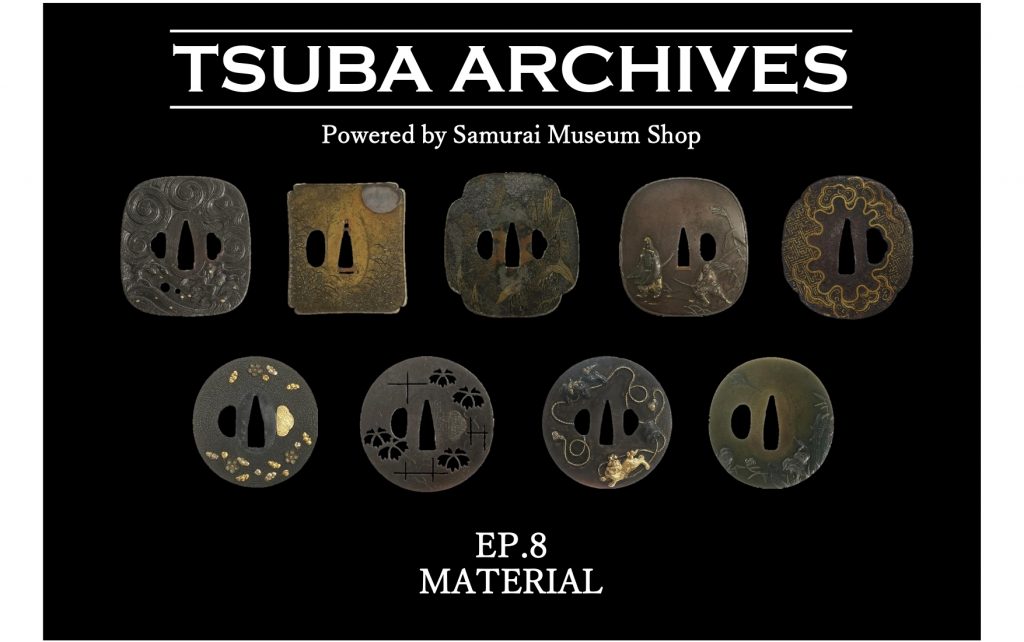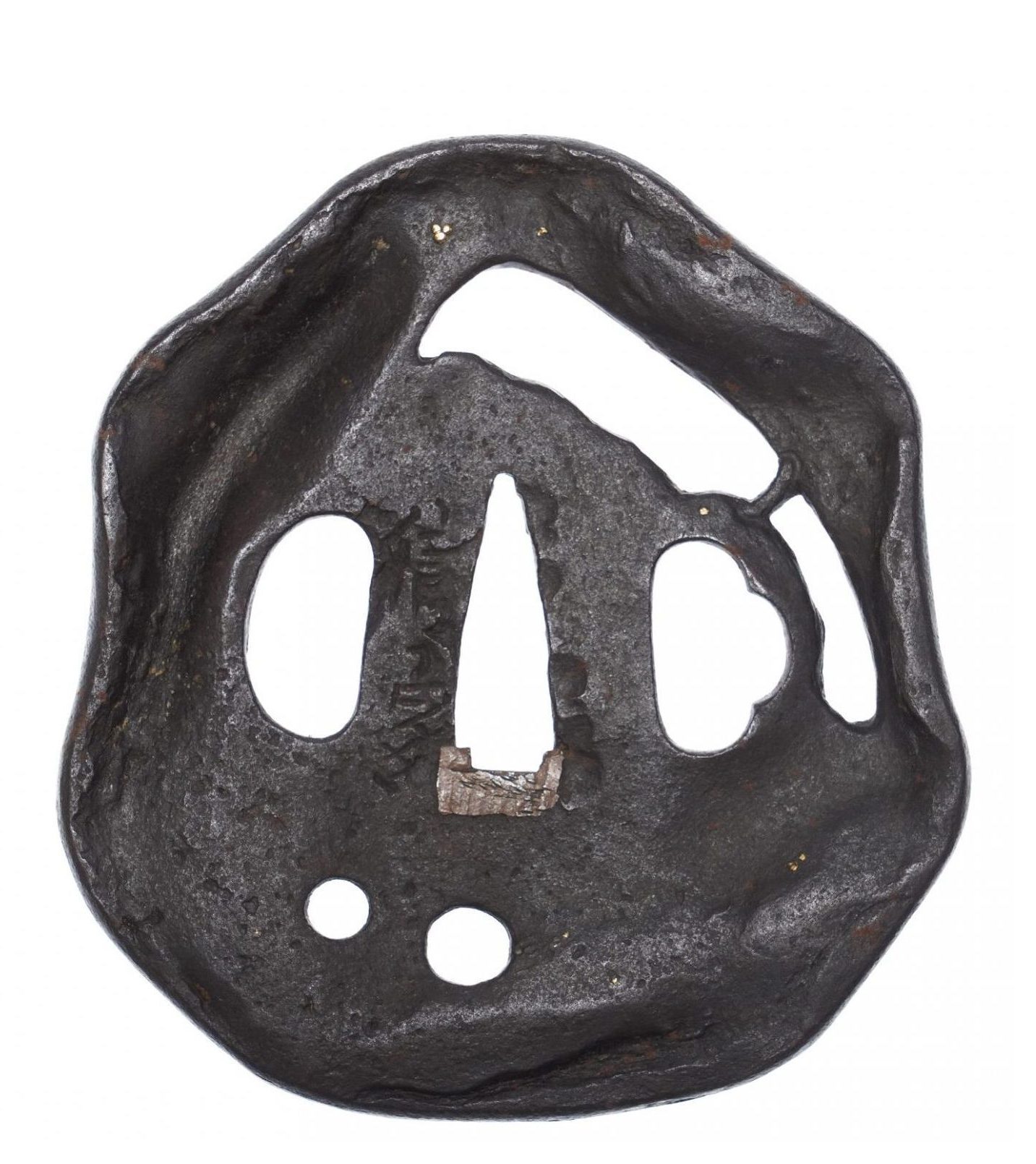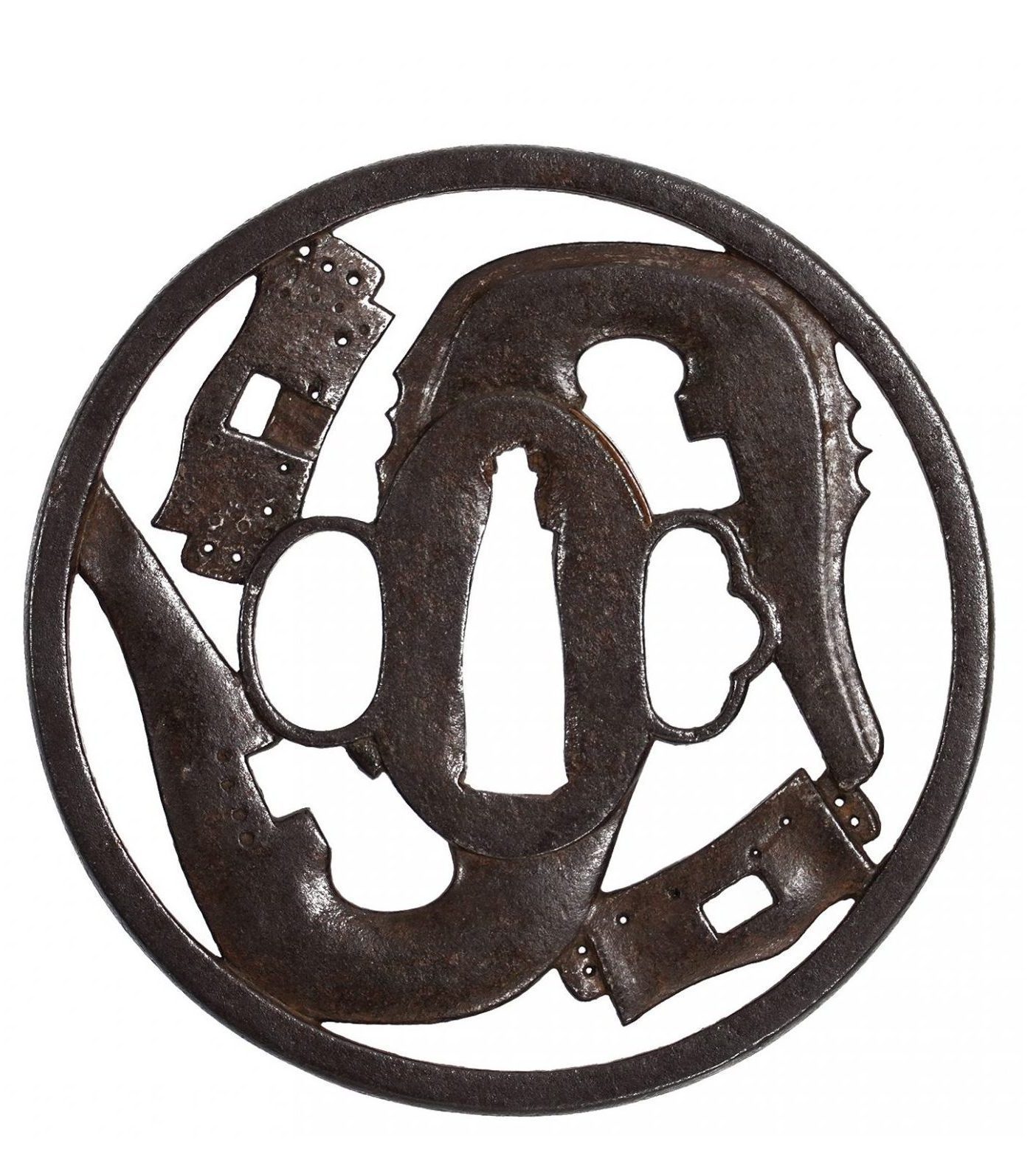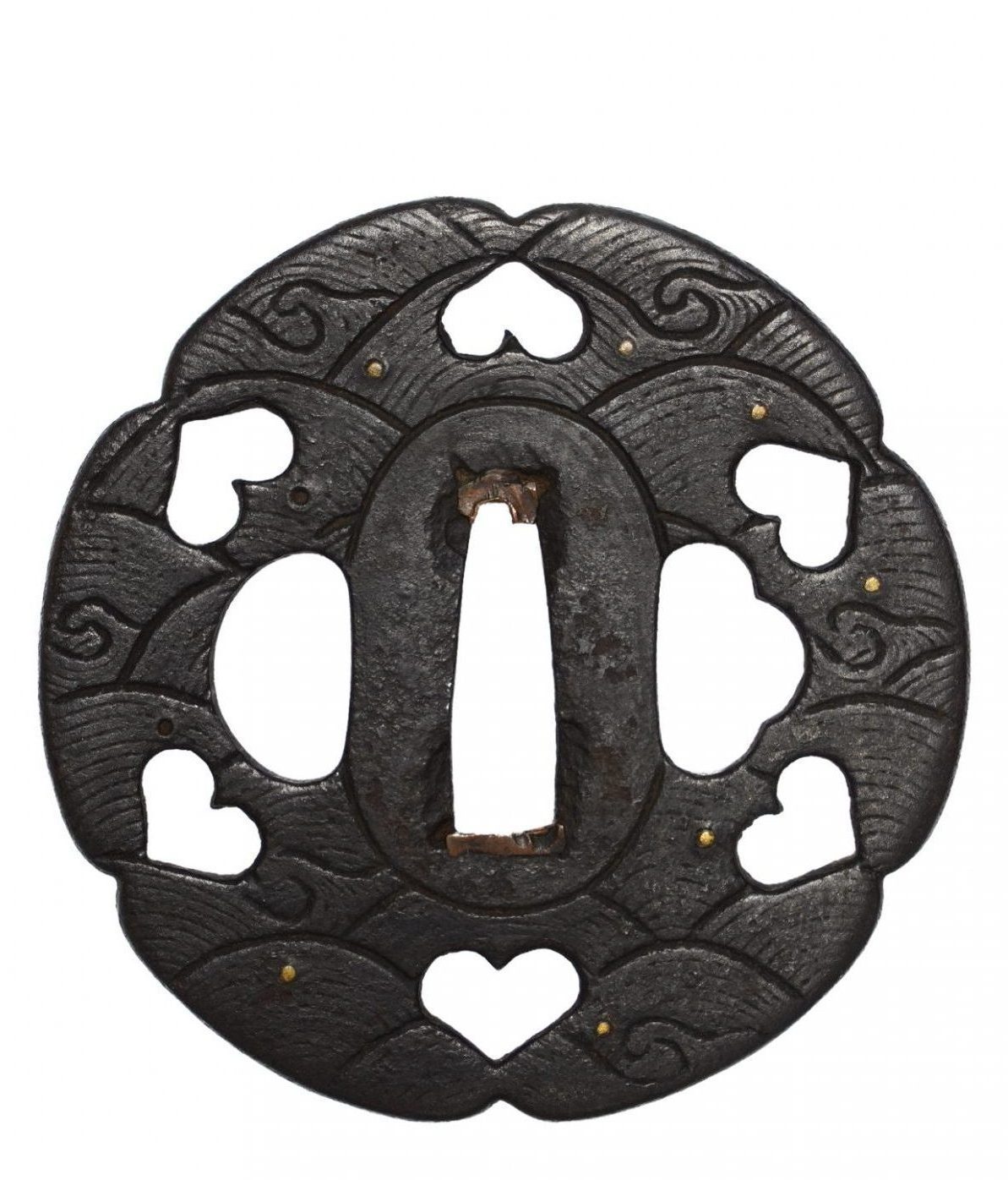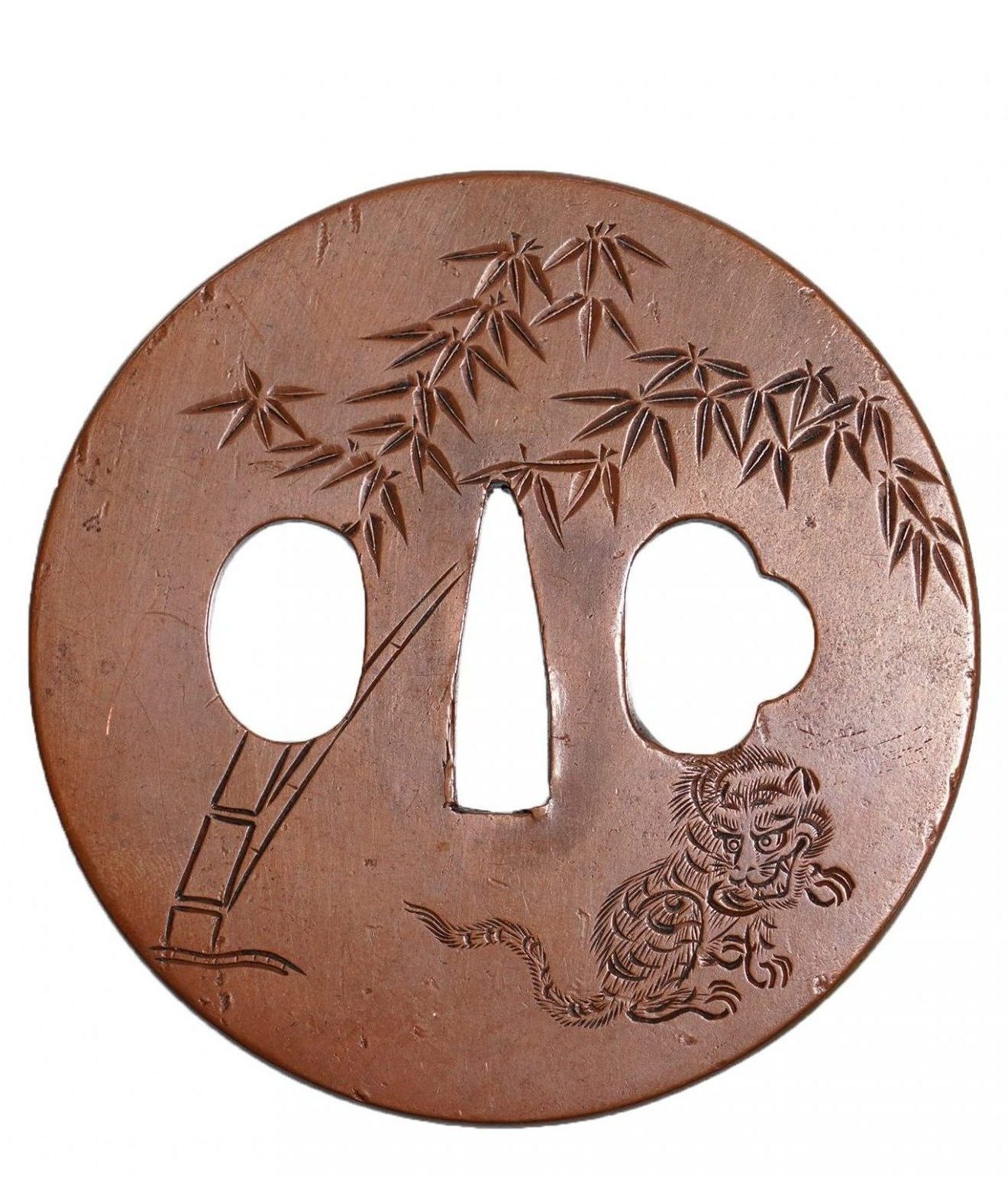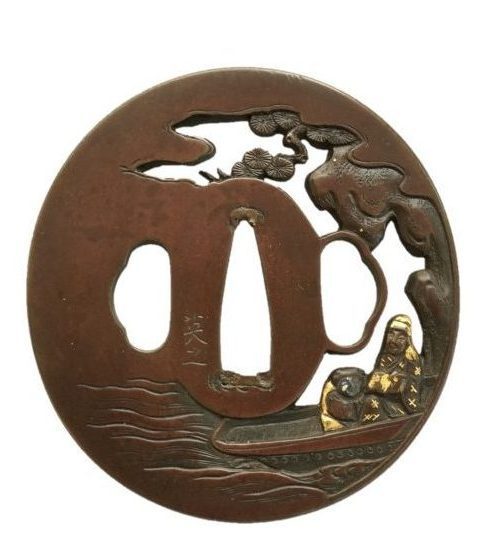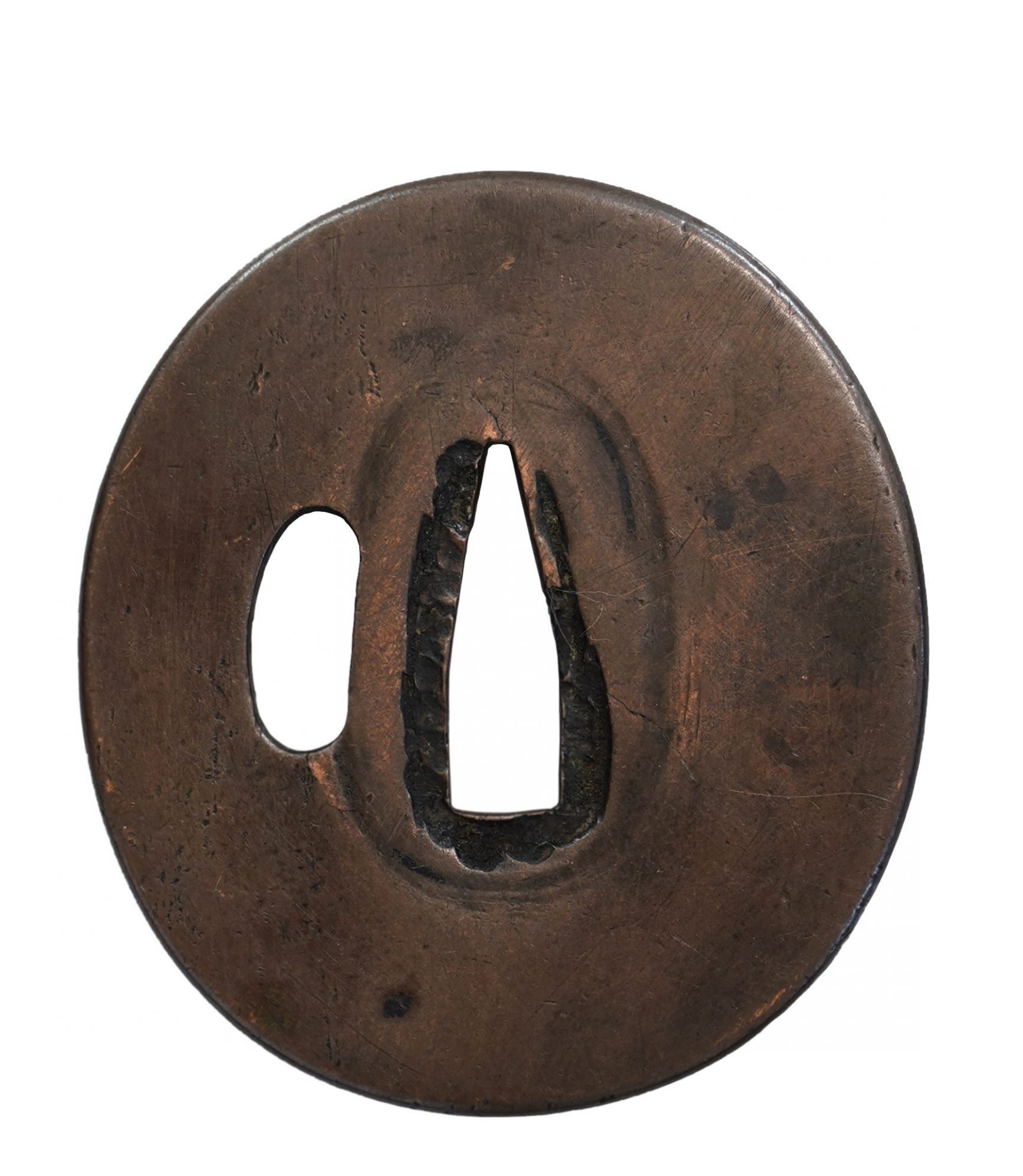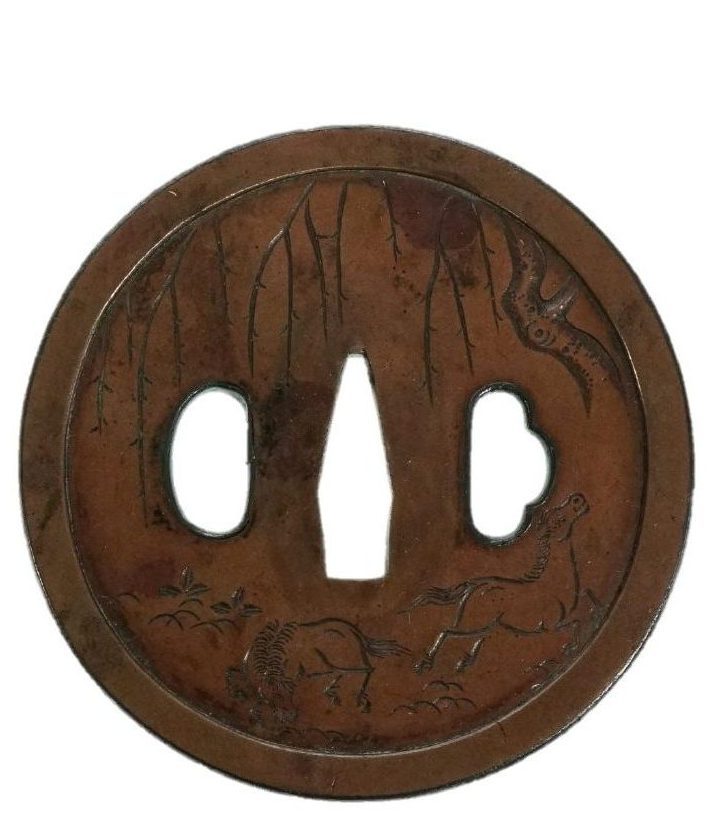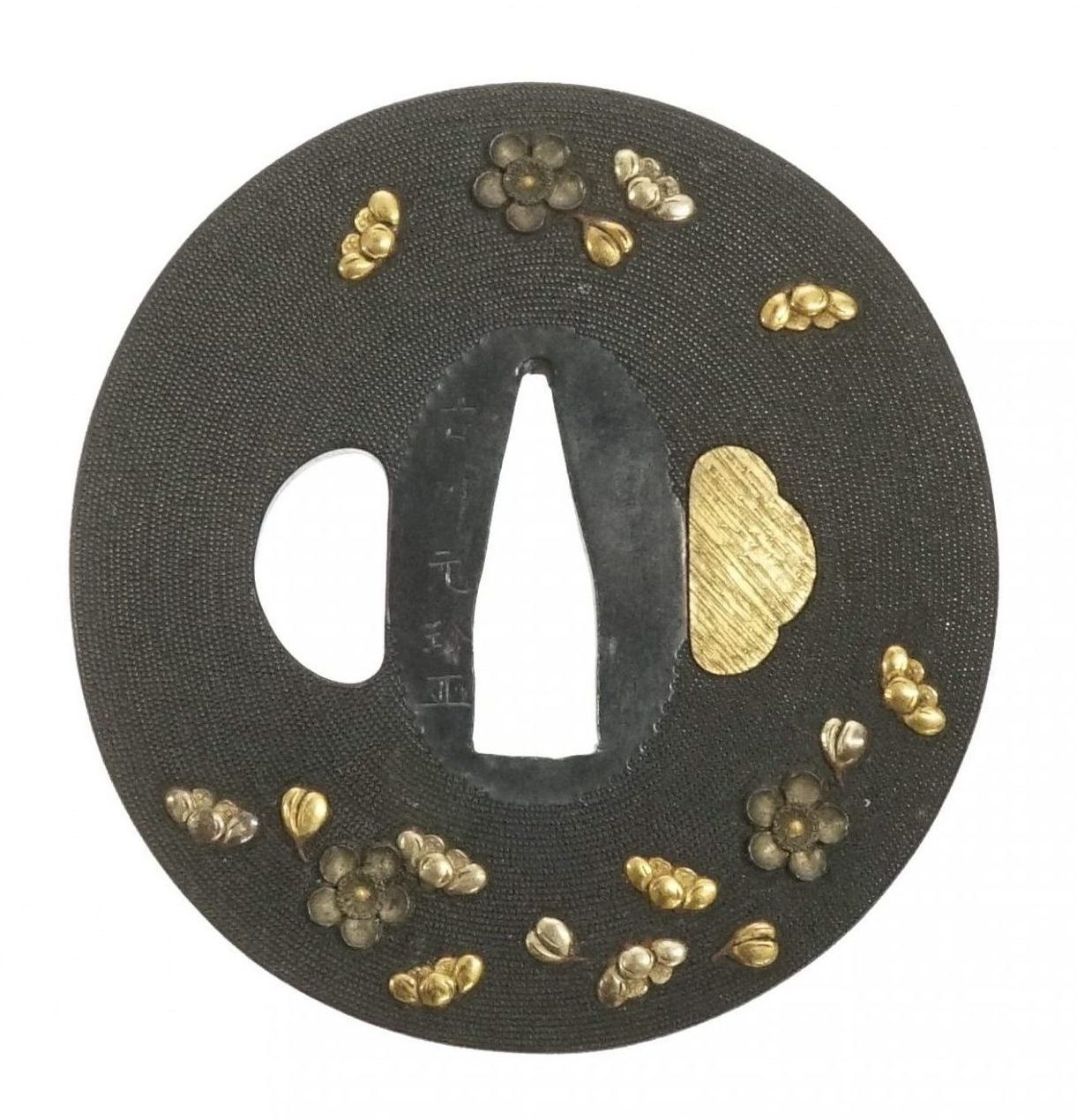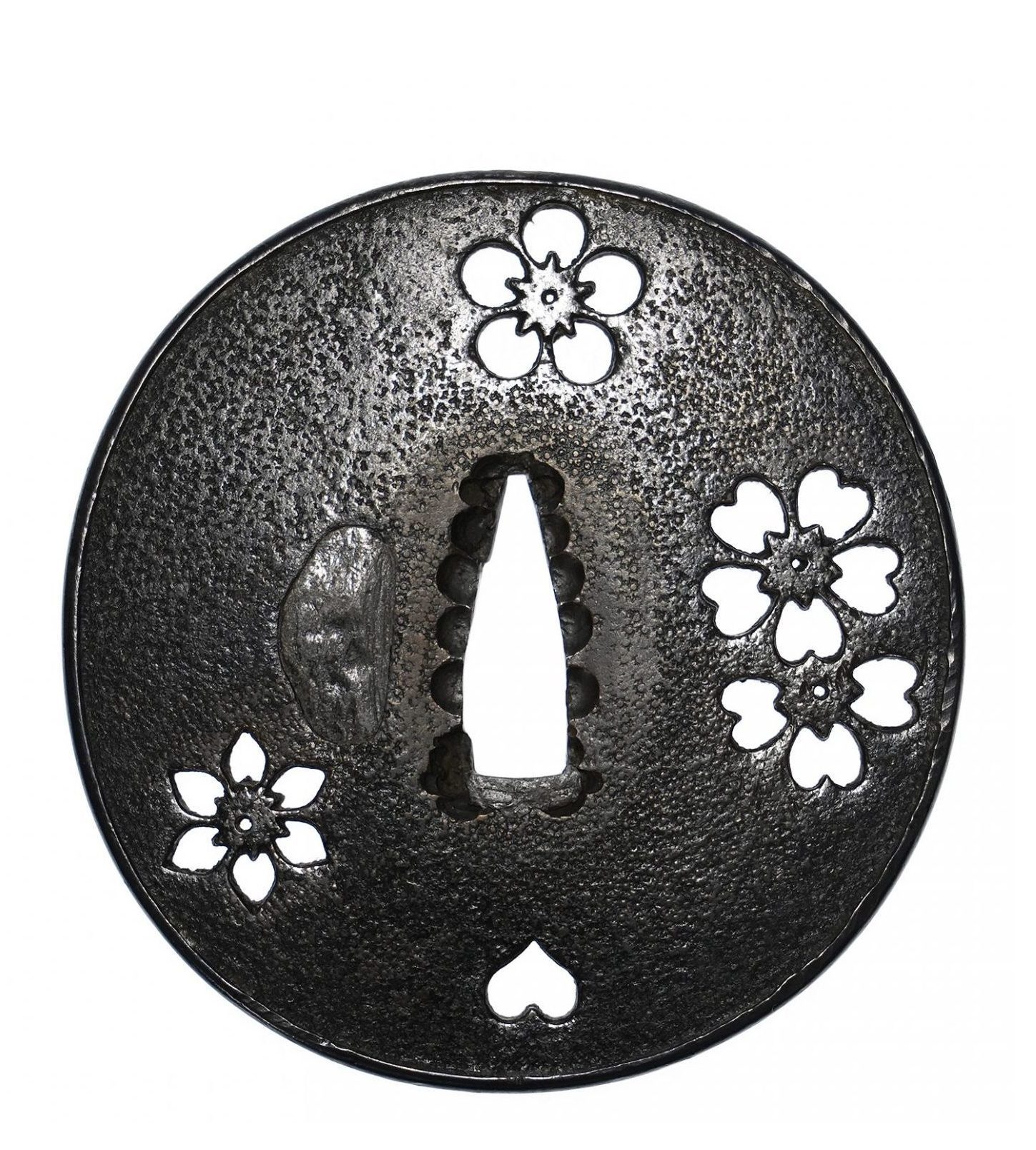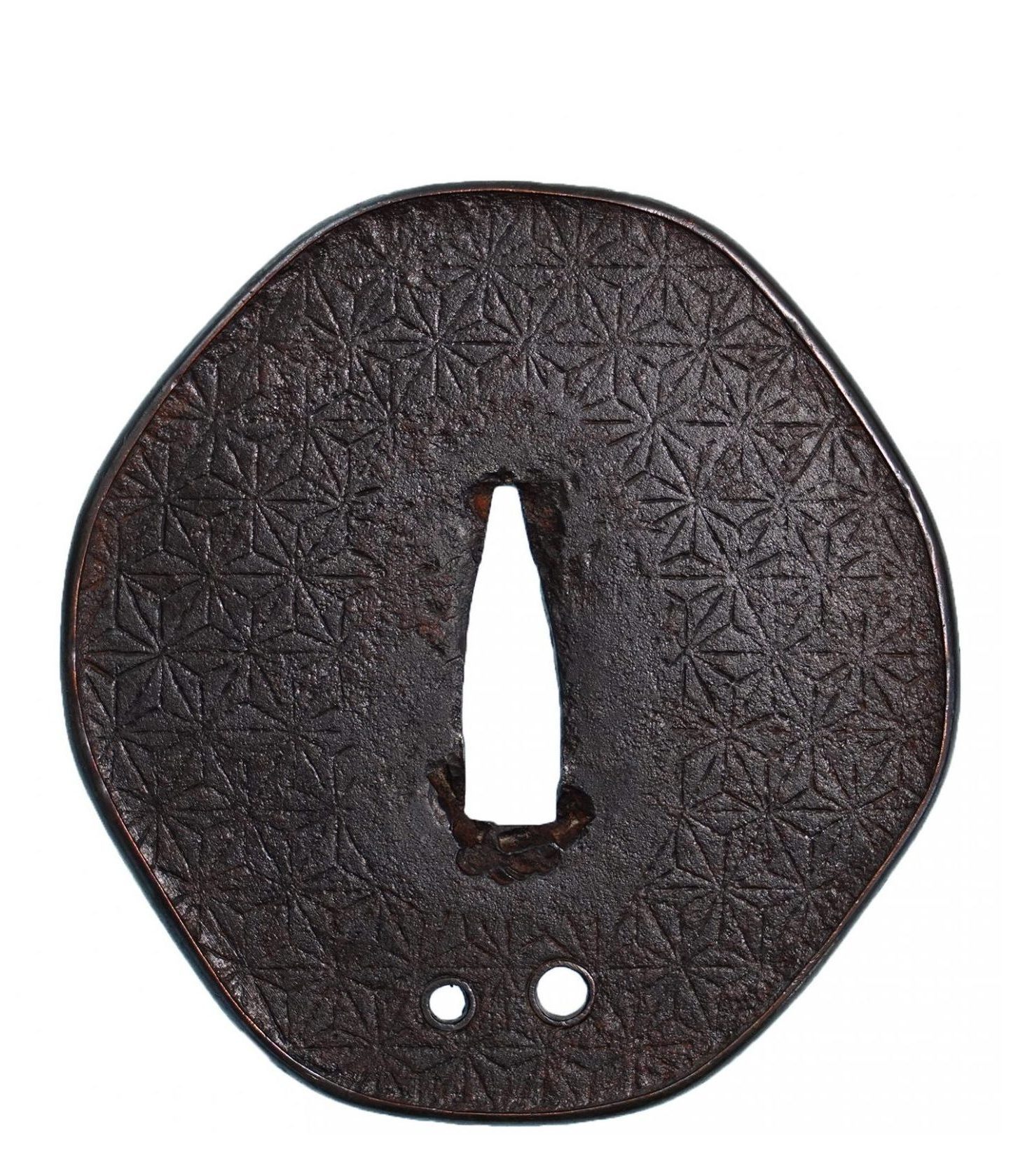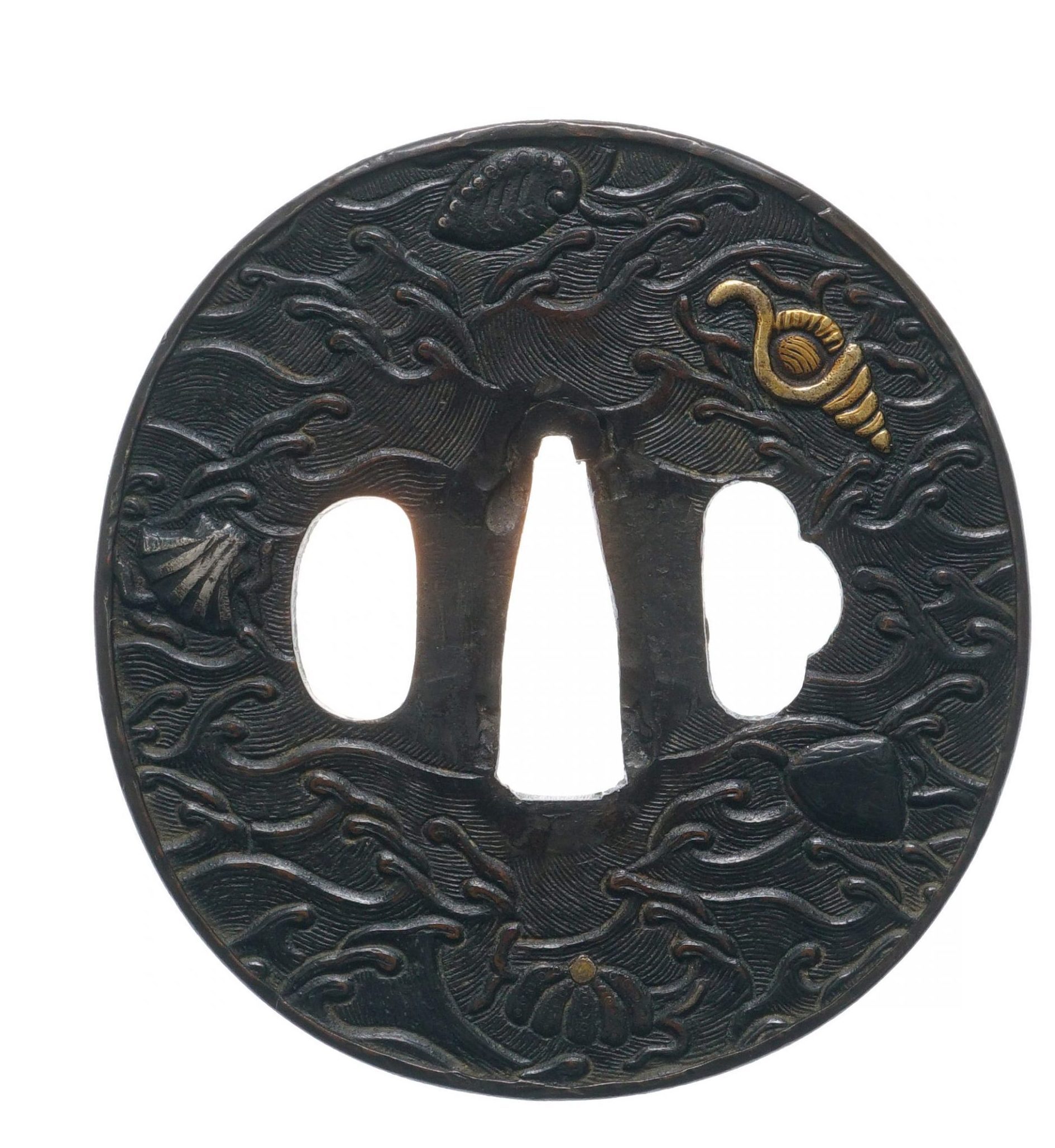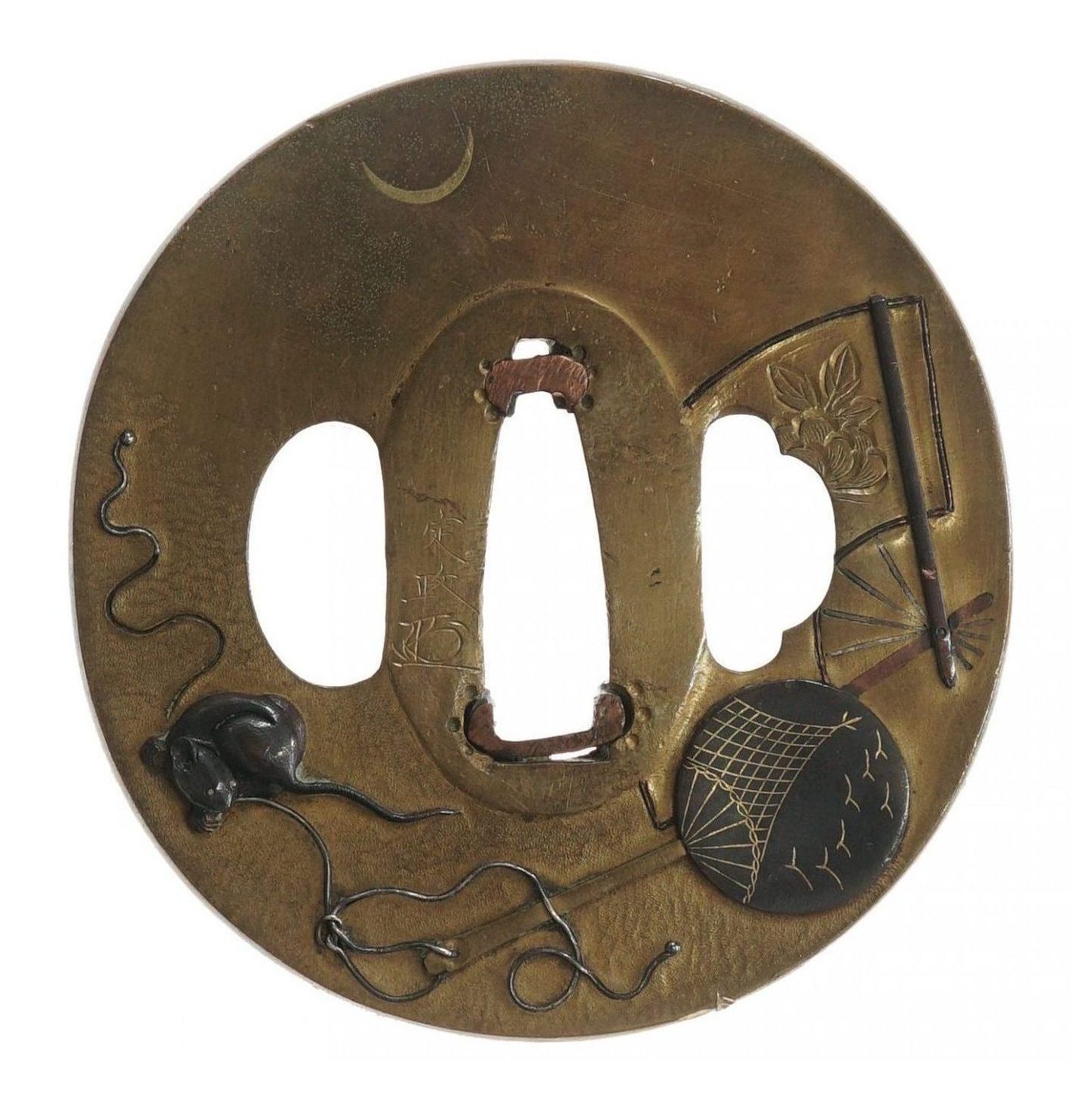Episode 8: MATERIAL
Welcome back to the Tsuba Archives. We appreciate your interest in antique Japanese sword mountings.
Until the last time, we have touched on various motifs that decorate Tsubas. This time, we are focusing on the materials of Tsuba. We hope this information will give you an opportunity to enjoy Tsubas from a different perspective.

INDEX
-Tetsu (鉄, iron)
-Suaka (素銅, copper)
-Shakudou (赤銅)
-Yamagane (山銅)
-Kin (金, gold)
-Shibuichi (四分一)
-Shinchu (真鍮, brass)
You can jump to the product page by clicking each Tsuba’s image below.
Most Tsubas that exist today were made from alloys of iron and copper or combinations of multiple materials. Metalworkers also used brass, which was considered luxury stuff at the time, or high-purity gold. However, these Tsubas were mostly for enjoying their appearances, not for using in actual fighting. In addition, there are also Tsubas made of leather or horns of animals. Although the strength is inferior to iron Tsubas, we guess that these Tsubas were preferred for their unique looks and texture. Today, we would like to introduce metal materials that were used in Tsuba production. Please kindly check the explanations below.
Iron has been mainly used for metal crafts since ancient times. It is a popular material for its toughness, and lots of people appreciate its texture making the best use of rust. Especially in the Bakumatsu period (幕末, the late days of the Tokugawa Shogunate, 1853-1868), elaborate handicrafts of iron Tsuba were very favored.
The Suaka is high-purity copper compare to the Yamagane (山銅). It makes a reddish-brown color. It is also called the Akagane (あかがね) because its surface reveals a reddish tinge when polished. Aka (赤, red) is associated with this name.
The Shakudou is an alloy of copper and gold. This material has often been used for sword mountings. It is because of its rollability (easiness of processing), adhesiveness, ease of plating, and the beauty of black coloring. The Shakudou is easy to be attacked by acid; therefore, it is better to avoid touching it with bare hands. Since the Shakudou is made from copper and a small quantity of Shirome (しろめ, an alloy of tin and lead), and gold, Shakudou Tsubas have black color. That is why this material is also called the Karasu (烏銅, Shakudou’s black color is likened to crow. Crow is called Karasu in Japanese).
The Yamagane is a mixture of copper and unrefined impurities. It makes a yellowish-brown color. However, there are also different colors of Yamagane Tsubas, such as bluish-black, depending on the composition ratio. In ancient times, the Yamagane was often used for making metalworks. In the Edo period, copper refining technology advanced, and high-purity materials became the primary current. However, the production of the Yamagene Tsubas did not go out of date because its simple texture was still appreciated.
The Kin is one of the precious metals. It is not easily affected by acid and has a gorgeous luster. Because of its brilliance, gold has been cherished as a noble decorative material.
-Shibuichi / Oborogin (四分一 / 朧銀)T-93, T-236, T-99, T-215, T-112, T-83


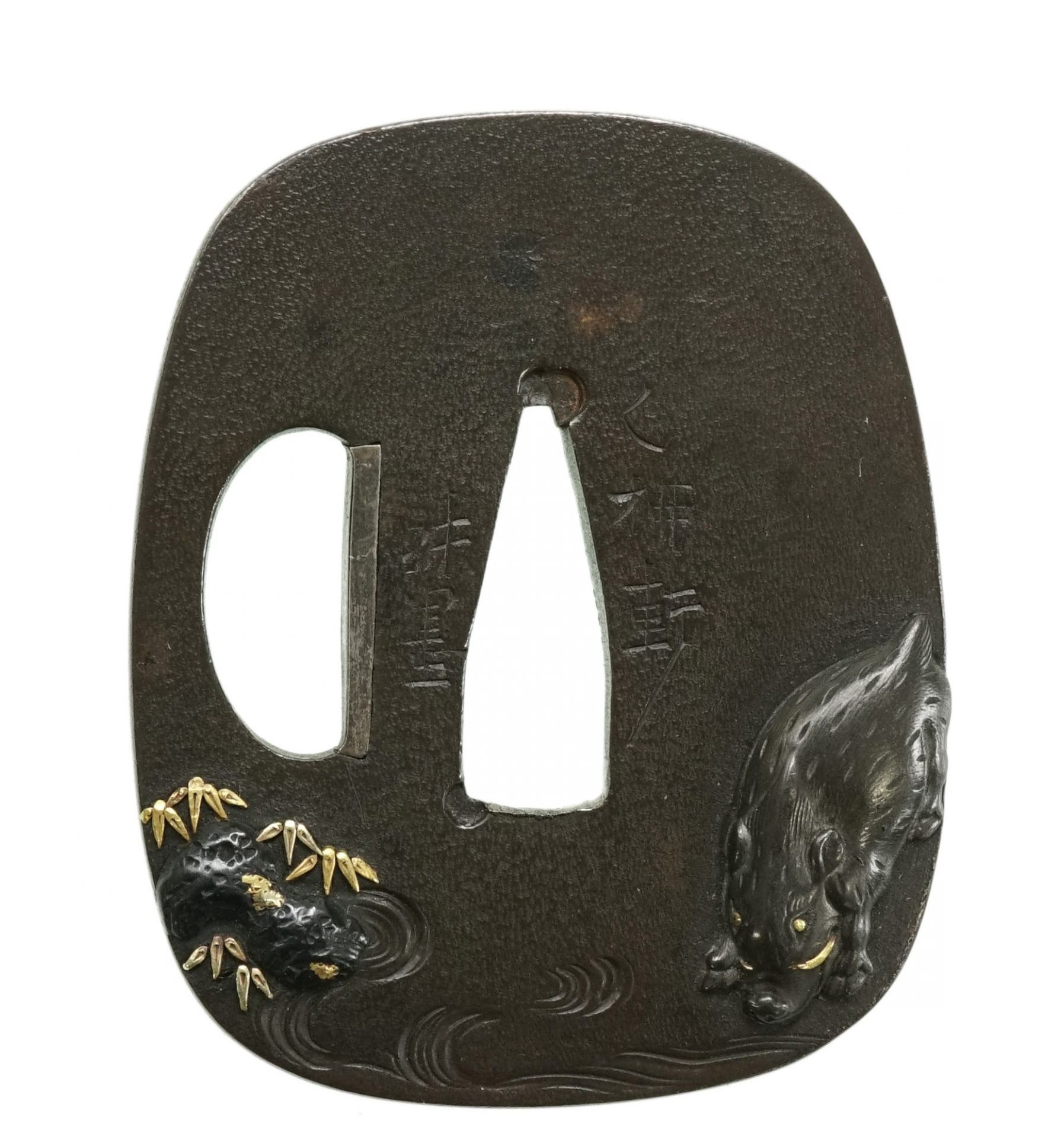
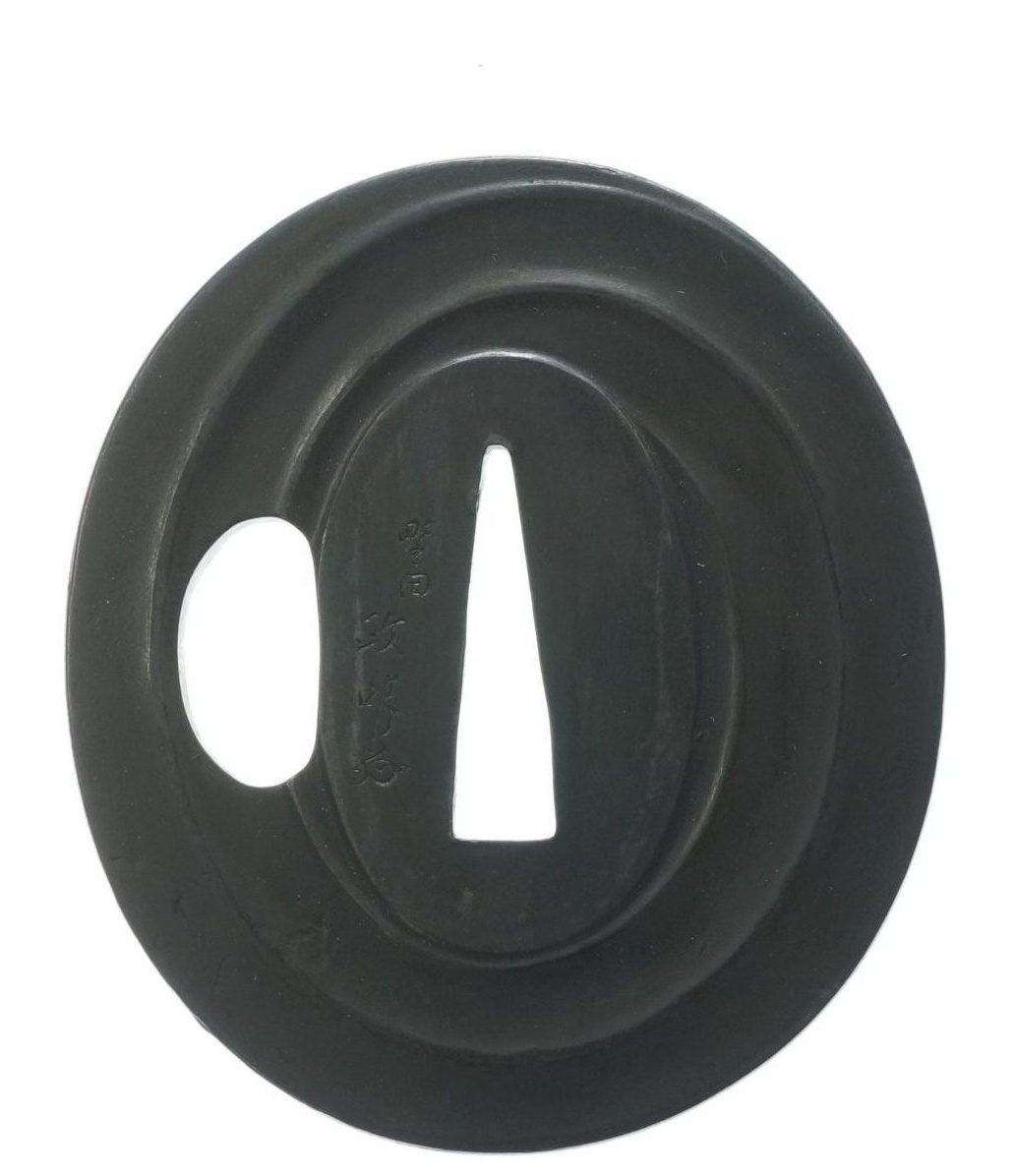

The Shibuichi is an alloy of copper and silver, and it contains about 25% silver (a quarter of copper), which is why this alloy was named Shibuichi (四分一 means quarter in Japanese). It is also called the Oborogin because it becomes a beautiful silver-gray.
-Shinchu (真鍮, brass)
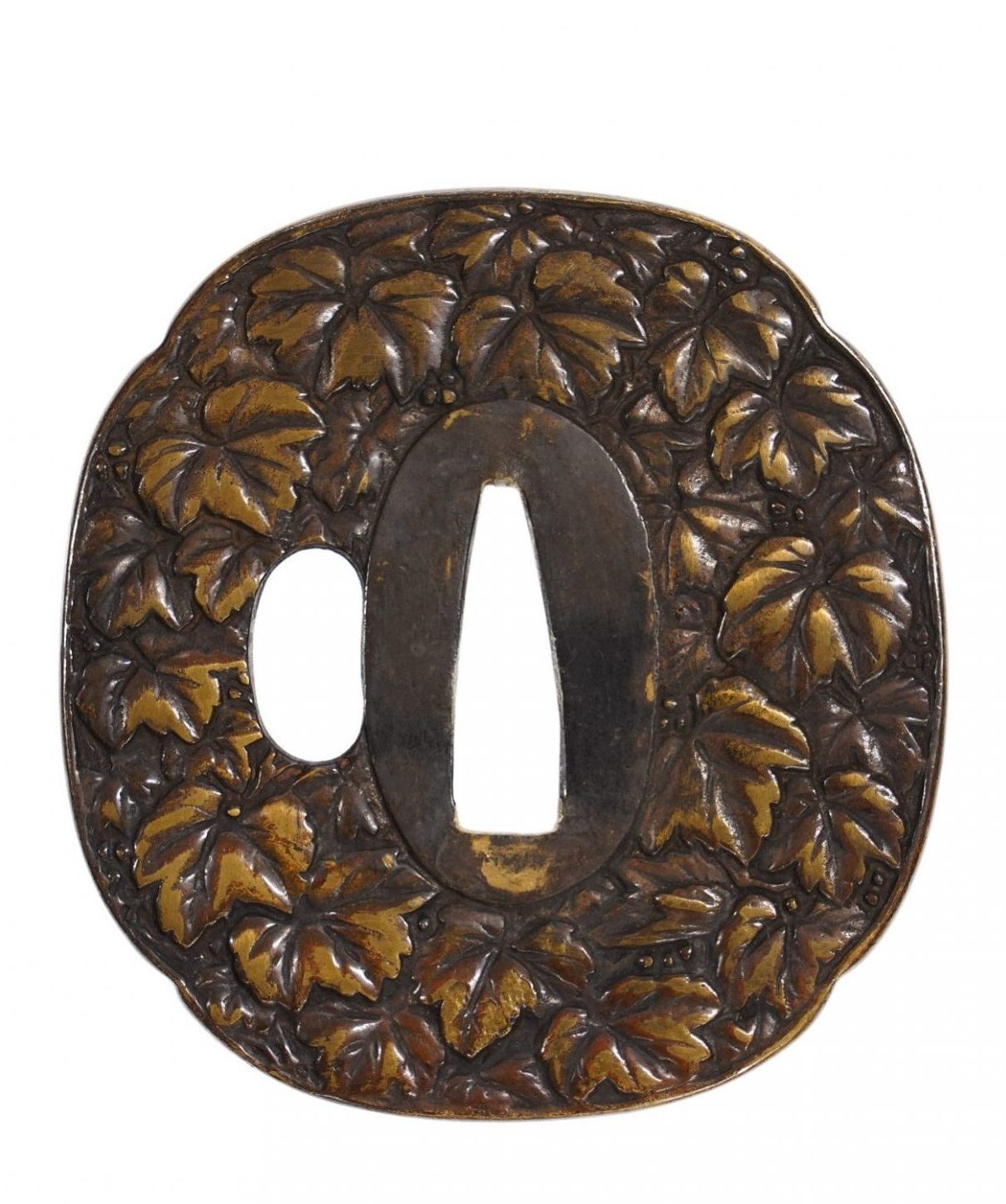
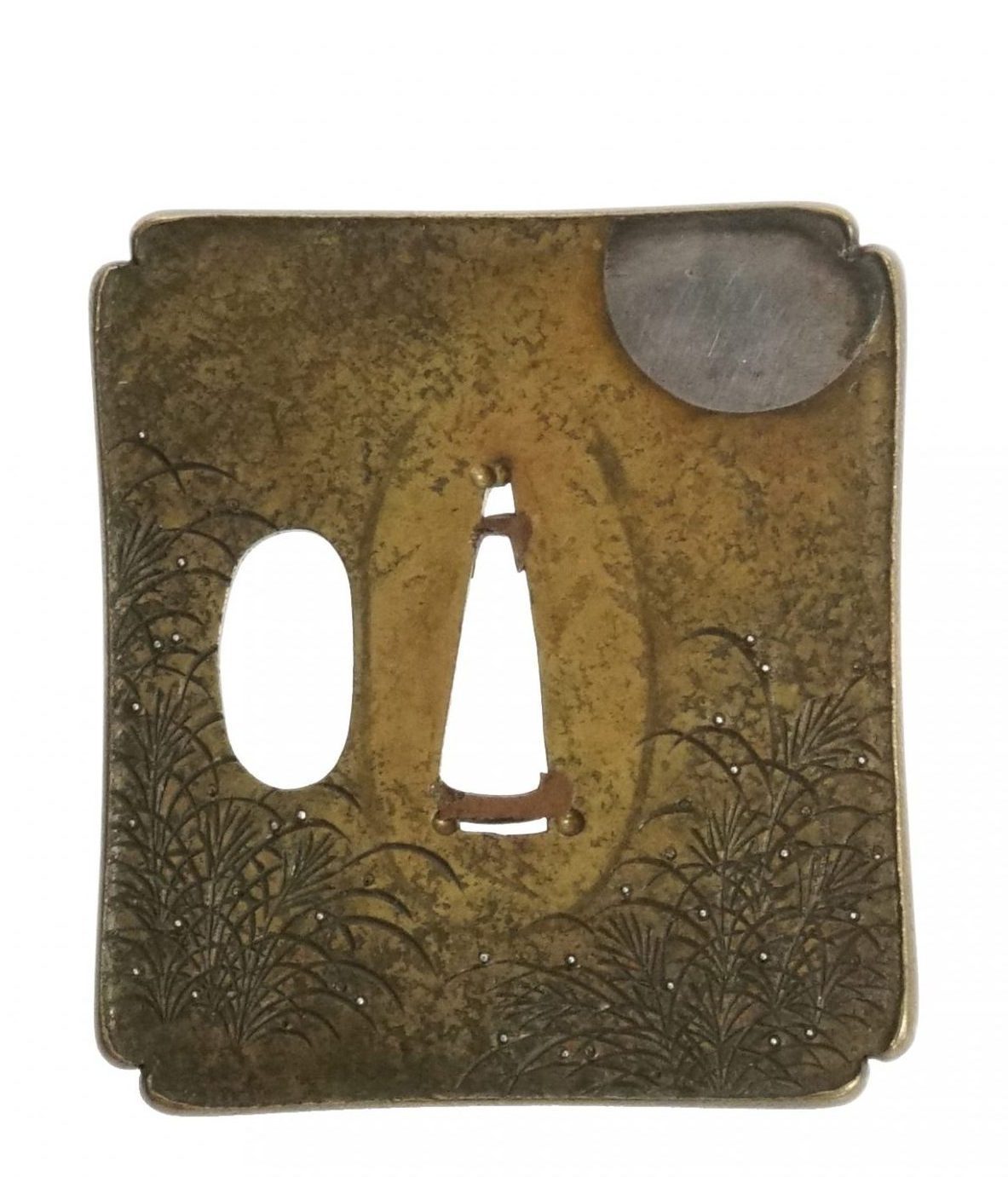

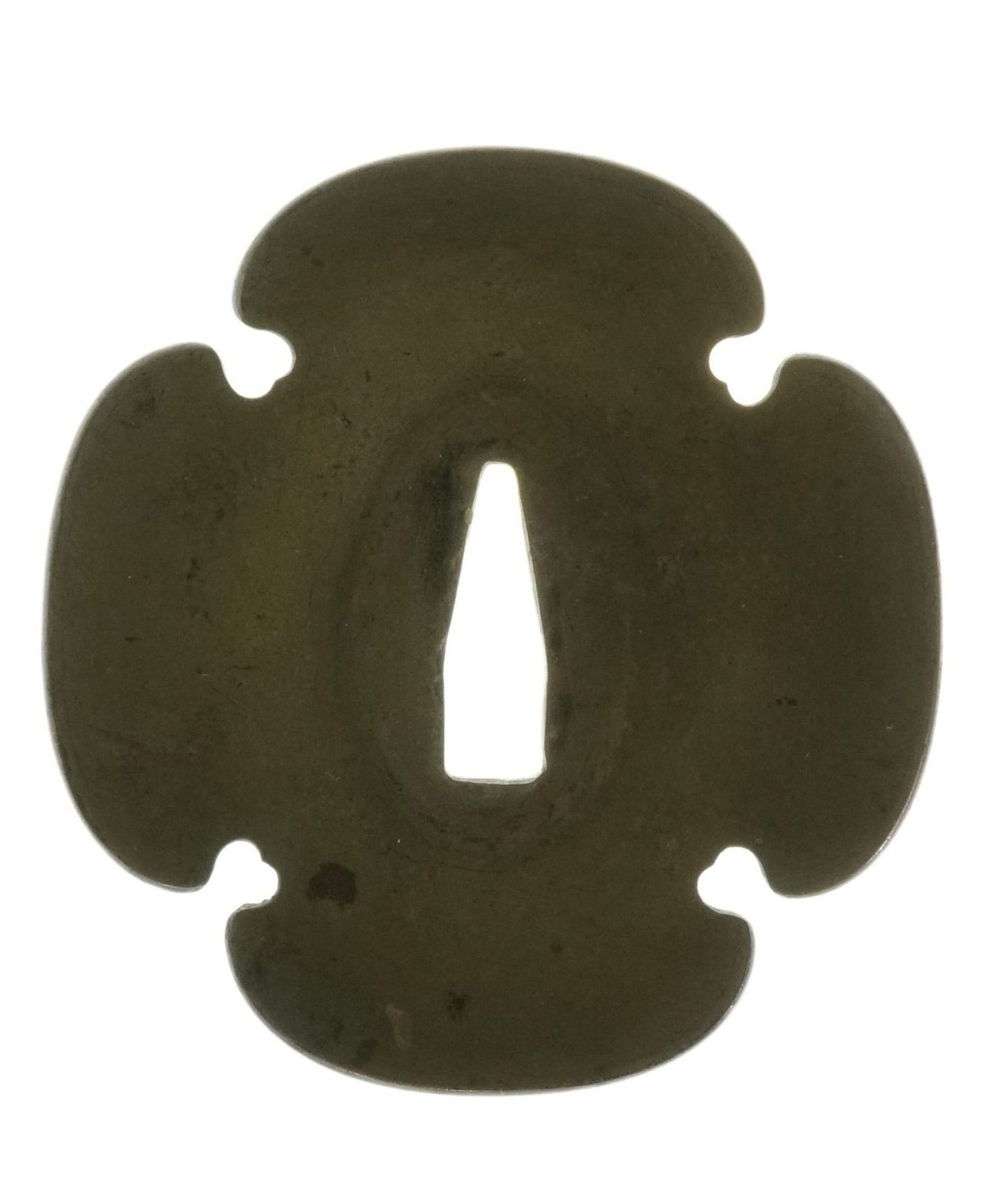
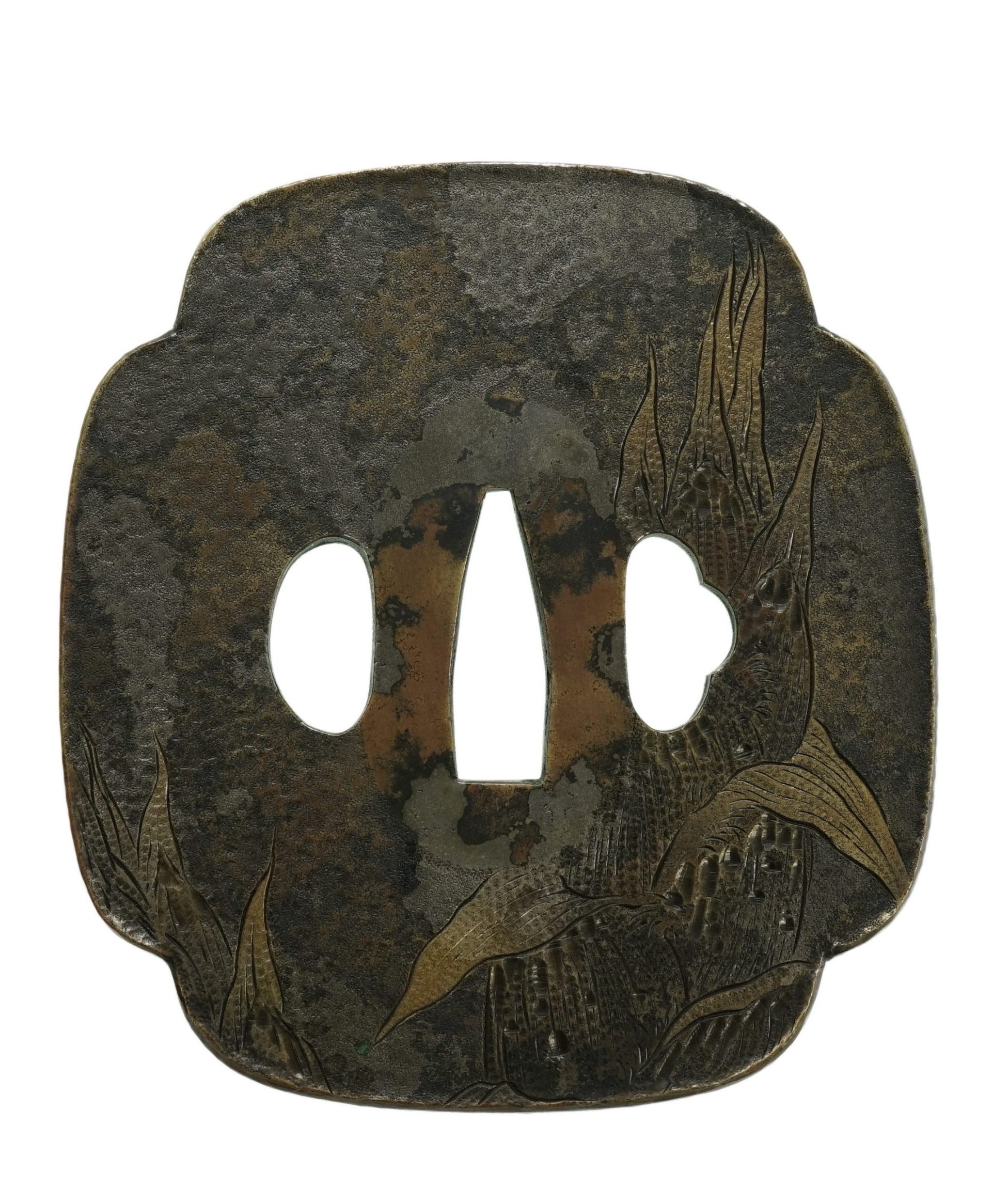
The Sinchu is an alloy consisting mainly of copper and zinc. It has a yellowish brightness with a golden glow. This metal is easy to process into various shapes by heating. It is said that Japanese people started using this material in the middle of the Edo period. Today, it is used for making 5-yen coins. It is often utilized for Buddhist altar fittings or decorations of temples.
We are going to continue the new episode from different perspectives. We will see you in the next episode.
Would you like to read other articles? Please kindly check the links below.
Episode 1: The Charms of TSUBA | Samurai Museum Shop
Episode 2: DESIGN -ANIMAL①- | Samurai Museum Shop
Episode 3: DESIGN -ANIMAL②- | Samurai Museum Shop
Episode 4: DESIGN -PLANT①- | Samurai Museum Shop
Episode 5: DESIGN -PLANT②- | Samurai Museum Shop
